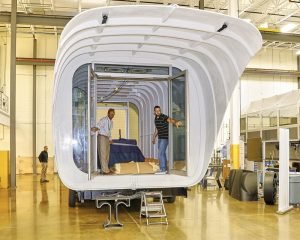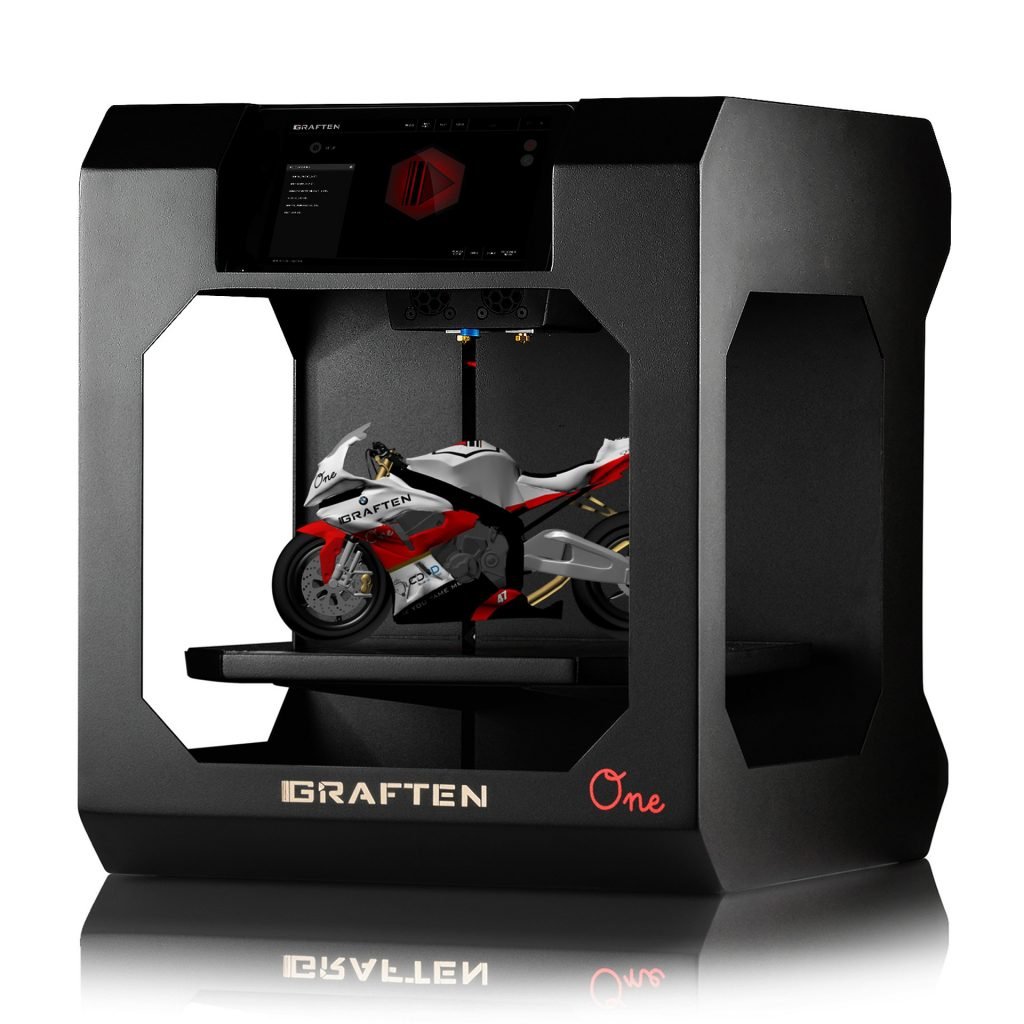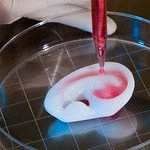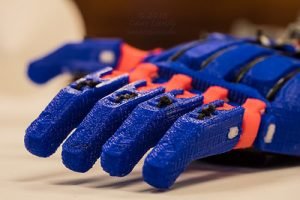Discover some of the strangest, and most creative, 3D-printed items.
With 3D printing becoming a relatively well-known commodity over the past few years, many of the items produced via 3D printers aren’t as surprising as they were a decade ago. While consumers are more familiar with 3D printing, powerful machines still create weird and unusual objects due to their remarkable ability to create custom items.
From body parts to engagement rings, 3D printers create an extraordinary array of objects that might surprise the average person. We highlighted 15 creative, weird, and useful 3D printed creations.
Babies
Filemon Schoffer, chief marketing officer at 3DHubs, keeps a book of all the interesting and unusual things he’s seen 3D printed at his location over the past year. The items range from practical to unnecessary to potentially life-saving.
A doctor once used 3DHubs to create models of babies to perform simulation operations on, as he had previously used toy dolls.
“Using a whole set of different materials, he could print functional different organs like hearts and lungs,” Schoffer said. “Then he could exercise procedures on those models … instead of using dolls from the toy store, he now had fully-functional models to test upon.”
Body parts
Much like the replicas of babies, 3D-printed body parts play a role in medicine today. Doctors from the University of California at Los Angeles and the University of Edinburgh’s Centre for Regenerative Medicine recently made strides to 3D print human ears using the stem cells of patients.
While the use of 3D printing to create body parts has merit, the controversy around the use of stem cells has slowed progress in recent years, according to the article. The 3D printing of body parts may have more value as generations become more familiar and accustomed to medical applications of 3D printers.
Shoes
Do you ever feel like your shoes don’t quite provide the support your feet need? With most standard shoes not designed specifically for your individual feet, it may be time to get a pair of 3D-printed shoes. Companies like OESH shoes design footwear around your body’s needs and then 3D print the shoes to fit those specifications.
“3D printing customized wearables is no longer the future; it is the present,” said Maggie Rogers, a designer and fabrication specialist at OESH.
Movie props
Whether it’s C3PO from “Star Wars” or a costume for a superhero, 3D printing is quite effective at quickly, and affordably, producing movie props. With design specifications varying for different costumes and props, 3D printing allows for a wide range of creative designs.
Prosthetics for people and pets
The Lake Placid company Create Orthotics and Prosthetics is the first company to manufacture medical-grade 3D-printed prosthetics. The company creates custom limbs that it makes and fits with the customers so they can personalize them.
Enabling the Future is a nonprofit organization that connects people with volunteers who can 3D print prosthetic hands for children in need. The part plans are free to download.
There are even 3D-printed prosthetics for pets. Take Buttercup, a duck born with a backward foot. Thanks to 3D-printing company NovaCopy, Buttercup now has two fully functioning feet and the chance to lead a normal, web-footed life.
Dead people
A Chinese funeral home uses 3D printing to improve the appearance of the dead. This can be used to help people look younger, but another purpose is to repair the facial appearance of those who died in natural disasters or accidents. The hope is that loved ones won’t have to face the added trauma of seeing their deceased relative or friend badly scarred or disfigured from a tragic accident.
Dinosaurs
The Smithsonian took advantage of 3D printing to conjure up different poses for one of the most complete Tyrannosaurus Rex skeletons ever found. By 3D printing replica bones, the Smithsonian staff was able to play with different variations in posing without disturbing the real skeleton. After finding the pose that they believe fits best, they make the changes to the actual dinosaur bones. This saves them a tremendous amount of time.
Drones
3D printing is taking to the skies as well. The University of Southampton in the U.K. is home to the first 3D-printed unmanned aerial vehicle (UAV), or drone.
The Southampton University Laser Sintered Aircraft can be assembled in 10 minutes once it’s printed and doesn’t require any screws or traditional fasteners. The SULSA can fly on autopilot or via remote control for around 30 minutes and reach speeds up to 90 mph.
The military is also deploying 3D-printed drones for different missions. The Navy has been testing tiny 3D-printed drones called Close-in Covert Autonomous Disposable Aircraft that can glide into regions and create ad hoc networks for ground forces.
Planes, trains, and automobiles
Rolls Royce uses 3D printing for cars and airplanes. The company believes 3D printing plays a pivotal role in the future of manufacturing. 3D printing of trains comes mostly in the form of model trains. Despite this, the principle remains the same. If you’re manufacturing something that needs customization, 3D printing is a great option.
Formula 1 race cars are using 3D printing as well, with some teams bringing 3D printers to their race venues for any necessary last-minute alterations.
Houses
Tech startup Apis Cor successfully constructed a 3D-printed home in less than a day. The 400-square-foot structure is stable, and it cost under $11,000 to make. The printer itself is mobile and able to build homes in a variety of shapes.
A company in Shanghai called WinSun also boasts an inexpensive 3D printing method for building houses. The layered structure of the houses allows plumbing, electrical lines and insulation to be easily installed.
Musical instruments
Astroprint, a popular cloud platform for consumer 3D printing, has helped create functional violins with its platform. This particular instrument just needed the strings, knobs and chin piece to work like a regular violin. That, and a competent violinist.
Food
Pizza and desserts are just a few of the specialties of BeeHex, a 3D printing company specializing in food. CEO Anjan Contractor created NASA’s 3D food printer, which was used on space missions. Now, Contractor aims to disrupt the food industry with his imaginative creations at BeeHex. While the company has found success printing pizza, they’re also getting into personalized nutrition for more health-conscious consumers.
Sports equipment
Whether you’re trying to catch a wave or avoid driving to work, 3D-printed sports equipment might be the solution for you. Proto3000 printed a surfboard and gained a better understanding of how to produce a lightweight and functional board. The company believes 3D-printed sports equipment could alter the future of the industry.
Thingiverse offers plans for those familiar with 3D printing to create their own bikes. Not only will you get the satisfaction of building your own bike, it’ll be fully functional. If any parts break or wear down, all you need to do is print a new one.
Mars Colony
The dream of human life on Mars takes more steps to becoming reality as new technology is developed, and 3D printing will no doubt be part of that endeavor. Researchers at Northwestern University in Illinois are developing a 3D printing method to create tools and structures out of Martian dust. The team of scientists is devising a way to convert the alien dirt into a rubber-like material for building. It will save space explorers time and money from shipping building material from Earth to Mars.
Imagine if this method could be automated so that future colonists could arrive on the red planet with their colony already built and waiting for them.




